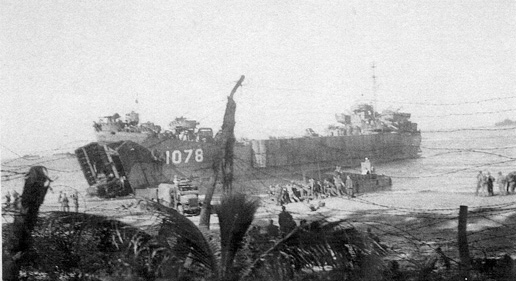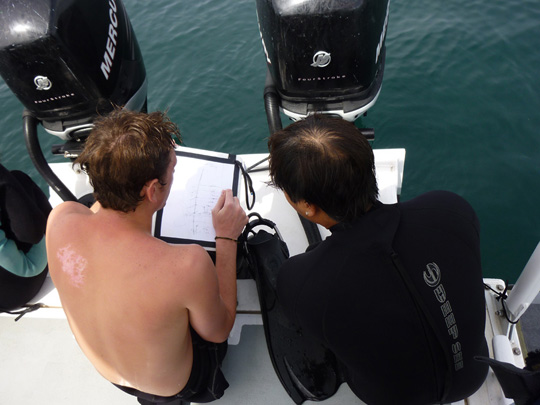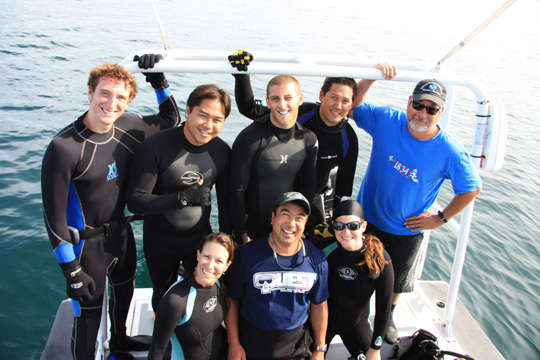Defending Our Shores:
Maui's World War II Legacy

Between June 5th and June 18th 2011, NOAA's Office of National Marine Sanctuaries Maritime Heritage Program and the University of Hawai`i's Marine Option Program conducted a survey of sunken World War II-era aircraft and shipwrecks along Maui's southern coast. The survey adds information to the larger inventory of historic properties in Hawaiian waters, and provides a unique window on Hawai`i's maritime past.
Combat training impacted many areas of Maui during World War II, including the near shore marine environment. Prior to major amphibious operations, U.S. Marine Corps and Army and Navy personnel trained along Maui's southern coast from Mā`alaea Harbor to `Āhihi Bay. Overhead, aircraft from Maui's Pu`unēnē Naval Air Station conducted combat practice runs. Amphibious operations and naval aviation proved to be two critical tactical innovations of World War II that ultimately helped the United States secure victory in the Pacific. Visit our History section for more information.

The 2011 maritime survey team produced scaled drawings and took photographs of six wreck sites, including an unidentified sailing vessel wreck (training site); a carrier-based dive bomber; a carrier-based fighter plane; and three tracked amphibious assault vehicles. All these sites had been previously located by local divers, but few had been documented in detail. Visit our Results section for more information.
Developing new amphibious and aviation tactics proved hazardous as numerous planes and landing craft, and occasionally the lives of brave young servicemen, were lost around the islands. The aircraft and assault vehicles documented during the survey demonstrate the level of intensity and danger accompanying this period in Hawai`i. During war, sacrifices in both training and combat operations can be equally as tragic. Visit our Hazards section for more information

Today, the physical legacy of World War II in the Pacific can still be found in near-shore waters, where sunken aircraft and shipwrecks provide recreational diving opportunities as well as habitat for marine species. Island monuments, also part of this cultural landscape, mark the historic locations of amphibious training centers and marine encampments. Maui residents still remember the sights and sounds of the war period, yet only a handful of historic photographs are available. The underwater sites examined during the 2011 survey are, therefore, primary landmarks of military training on Maui during World War II. Visit our Home Front section for more information
Funding for the project was provided by the University of Hawai`i Manoa College of Natural Sciences. The survey was assisted by the Hawaiian Island Humpback Whale National Marine Sanctuary, local dive shops (B&B Scuba), the Bernice P. Bishop Museum, and the University of Hawai`i Maui College Marine Option Program.
Additional thanks for project support:
Donna Brown
George Brown
Brad Varney
Mike Severns
Bob Bruck
Shawn Arnold

